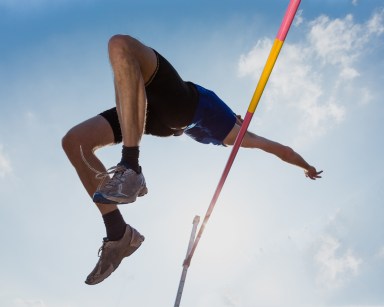According to the “Automotive Marketing in Sports White Paper” jointly released by the world’s leading performance management company Nielsen and Chinese multimedia conglomerate Tencent, the advertising volume of automotive enterprises increased rapidly with the booming development of China’s automotive industry. However, the advertisement did not yield satisfactory results and its monotonous nature led to a decreasing return on investment (ROI). Meanwhile the China’s sports industry is rising promptly due to the strong support of national policy promoting national health awareness. As a result, keen car brands began investing in advertising in sports. Nielsen’s research showed that advertising in sports resulted in increases in public approval and ROI for the auto makers. With the further development of China’s sports industry, automobile sports marketing will have unlimited potential.
China Passenger Car Association’s data shows that Chinese automotive industry maintained rapid growth. Especially in the past seven years, the passenger car market grew by 77%. Sales of passenger cars in 2016 reached 24 million. At the same time, the overall growth rate of the automotive market is slowing down. Slowing demand, purchasing restrictions, and intense competition in cities and market transfer led to unprecedented challenges for the automotive industry.
With the successive growth of car ownership in recent years, the number and diversity of car owners also increased. The whitepaper data shows that during the past three years from 2013 to 2016: 1) the compounded annual growth of the Chinese luxury car market reached 14.5%; 2) the market share of low grade cities increased by 62% in 2015 and continues to increase; 3) the proportion of female drivers rose to 29%; 4) nearly 40% of the owners are young. Increase spending power increased young and female car ownership and made the market, which was once dominated by middle-aged men, become more complex.
Marketing costs for auto makers go up year after year, but the results are stymied by traditional advertising. In 2015, the cost of China’s auto advertising reached 8.02 billion yuan, which is 6.6 times the advertising amount of 7 years prior. Unfortunately, consumers only recognize 11% of the car; 90% of the Chinese consumers fail to recall car brands after watching car commercials. Almost all car advertisements follow the same pattern, which makes it hard for consumers harder to differentiate car advertisements from those of other industries. Too many factors affect the decision making of prospective car buyer. Meanwhile, traditional automotive marketing means and media rarely communicate with consumers on an emotional level and their results became harder to satisfy the brand owners. Sports marketing offers advertisers more confidence.
Advertisers compete for sports marketing
The whitepaper data shows that the sponsorship fees of sports major brands have maintained high-speed growth. It has increased from $35 billion in 2010 to $62 billion in 2017, while the copyright payment that global media spent on sports also increased from $30 billion in 2010 to $45 billion in 2017. America’s Super Bowl ads are fiercely competitive every year. In 2017, a 30-second slot of Super Bowl advertising has reached $864 million, and advertisers still find it worthwhile. From 2006 to 2016, two of the top five Super Bowl advertisers were car companies.
The whitepaper found that the Super Bowl audience were most interested in its commercial, second only to the game itself. Among Super Bowl audience, consumer interest in the advertiser brands increased 14.8%; among those advertisers, interest in the car brands increased by 17.2%.
“Although audience members will not immediately buy these cars only having watched 30-second commercials, it is obvious that the customer interest and discussion of these brands increased. In this age of viral culture, popularity is wealth.” said Vishal Bali, managing director of Nielsen China.
Therefore, the world’s major automobile companies increased sports marketing investment. In 2002, Hyundai Motors spent 1 billion 500 million euros to become the sole designated automotive partner for the 2002 World Cup and all FIFA events before the 2022 World Cup. During the 2002 World Cup held in Korea and Japan, Hyundai advertisements were seen by 40 billion people globally, and its brand attention was improved by 14%.
With the growth of the automotive industry and consumer spending, China’s automotive marketing in sports also witnessed rapid growth in money and creativity.
“Sport events and car brands are a natural fit: you can subtly convey the brand image through the concept of speed, passion and drive seen in sporting events, which is consistent with the pursuit of car brand. We see a lot of car brands looking for the specific sporting event that shares their message when advertising in sports,” said Vishal.
China’s automobile-sports advertising market has great potential
The Chinese sports industry benefited from the national policy and the promotion of national health awareness in recent years, and still experiencing explosive growth. The Chinese General Administration of Sports predicted that annual revenue of China’s sports industry will exceed 5 trillion yuan by 2025, making up 2% of China’s GPD.
The whitepaper data shows that in 2017, 434 million people in China actively engage in sports, accounting for 34% of the total Chinese population, up 7% from 2010. Of the 434 million, 48% are female, 60% are between 18-35 years, 225 million are car owners.
More Chinese are becoming engage in sports and in more kinds of sports. The whitepaper shows that the women participation in the national marathon increased from 10% in 2015 to 46% in 2017, and more women are spending more on sports; car owners who follow non-mainstream sports are 1.7 times the number of average car owners; the E-sports fans cannot be neglected.
Sports events and car brands are naturally a natural fit. The whitepaper discovered that sponsoring sports events can significantly enhance automobile brand’s sporty image, credibility, and international image, etc. Nearly 40% of the car buyers believe that sponsoring sports events can enhance the sporty image of car brand, nearly 30% of consumers think that sponsoring sports events will intensify the international image of the brand.
Similar to other countries, Chinese car consumers have higher acceptance of advertising in sports events. The whitepaper shows that among the Chinese car buyers, the proportion of people who accept advertising during sport events can be accounted for up to 75%, and up to 88% of the audience is willing to watch the on-screen advertisements during a game. Consumer acceptance of car advertising in sports events (43%) is second only to sports equipment (70%).
Automobile sports marketing needs various formats
The whitepaper shows that, high-end car owners (vehicle price or car buying budget greater than or equal to 400,000 yuan) are in favor of non-mainstream sports, tennis, golf, racing, ice, snooker, football, and other extreme sports. High-end car owners will also participate in and follow various non-mainstream sports.
“High-end buyers have their own social spheres and cultural beliefs. It is difficult for public marketing tools and information to reach this group. The brand owners need to find more specialized and effective communication platforms and media.” Vishal said: “In addition to their own love of and attention on non-mainstream trends, these people also care greatly cultivating their children and passing on their elite status. Bring their children to participate in these non-mainstream sports serve as effective bonding experiences and effective means to socialize the children into the elite social circles.”
Fourty-five percent and 40% of high-end and average car owners will watch the rebroadcasts of sporting events, respectively. 48% and 39% of high-end and average car owners are willing to pay for high-definition viewing, respectively.
Although non-mainstream sports are favored by high-end car owners, majority of of the Chinese population still prefer more mainstream sports. The whitepaper shows that in addition to football and basketball, badminton, table tennis, swimming, and other sports in which the Chinese traditionally excel are also very popular with car owners, advertising through major sports events targeting such groups will yield satisfactory results.
The whitepaper also found that in additional to watching sports on TV, 78%, 32% and 44% of car owners watched on smartphones, tablet computers, and laptops, respectively. 61% of car owners preferred watching live sports. Nielsen believes that the acceptance of car drivers is relatively high. Credibility of the platforms can influence some prospective car buyers’ purchasing decisions.
For example, during the 2016 Rio Olympics, FAW Group and Tencent Sports cooperated on the program “Champion Express”. They creatively made three new cars into recording sets and interviewed 22 sports stars, including Olympic champions in the cars. The program artfully integrated interactions of the hosts and with the cars. With Tencent media matrix, the marketing ploy reach 170 million views and attracted the attention of target users. This program successfully brought 34 thousand searches for FAW Mall, reaching 35% of return visit effective rate and sold 1517 cars. Sales volume that year reached 125 million.
Internet economy profoundly influences the automotive sports marketing
The Internet catalyzed the development of electronic games. It is worth noting that these internet products including Internet gaming and its fans economy are affecting the automobile sports marketing. Vishal said that the new force of E-sport group has become the new model of consumers represented by millenials, who are more keen on whether brands and products can reflect their tastes and attitudes. The degree of innovation in marketing will greatly enhance their favor toward a brand.
Chinese E-sports market has been growing exponentially, the number of Chinese electronic sports audience showed a substantial increase. In 2016 there was about 220 million gaming users, of which 80% are 18-34 years old, up from 80 million in 2013.
E-sports is an essential for many young people. How to make use of electronic sports to fit in with the brand temperament is the key to seize this group of young cutting-edge consumers.” Vishal said.
Sports stars and teams are important to sports fans in addition to the sports. 66% of female car owners are fans of sports stars, significantly higher than male car owners, which is 55%. Outstanding sports stars can be as influential as entertainment stars. The whitepaper shows that 84% of the sports fans pay attention to sports stars’ micro-blogs, of which nearly 80% liked, commented, and had other forms of interaction with sport stars. Sports stars’ competitions, achievements, and personal life will become the topics of water cooler conversation of the car owners. Sports and entertainment super events also garner the attention many fans. Fan economy takes the lead in the cross-border and unbounded sports marketing.



